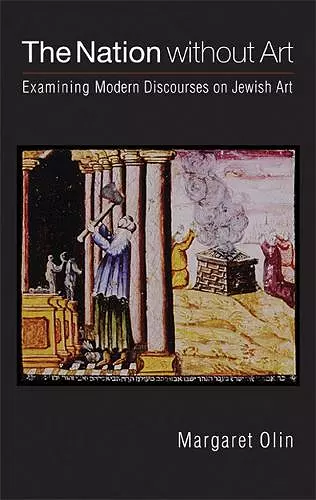The Nation without Art
Examining Modern Discourses on Jewish Art
Format:Paperback
Publisher:University of Nebraska Press
Published:1st Sep '07
Currently unavailable, and unfortunately no date known when it will be back

Looking through the history of art, a reader might conclude that Jews could not create art—and such an assumption, historically incorrect, would be no accident. As we see with disturbing clarity in this book, the discipline of art history—even the first scholarly studies of Jewish works of art—encourages the idea of the nonartistic Jew. Covering the last two centuries, The Nation without Art illuminates the rise of the paradigm of the non-artistic Jew and expresses the ways in which theorists, critics, and artists have sought to subvert, overcome, or work within it. Case studies explore the Bezalel School of Arts and Crafts in Jerusalem, whose efforts to use art to create a Jewish nationality in Palestine raise important issues of national identity, and the discovery in 1932 of the third-century Synagogue of Dura Europos, a symbol for scholars struggling against the Third Reich. Among those who supported or challenged concepts of Jewish art, Margaret Olin considers the nineteenth-century rabbinical scholar David Kaufmann, the philosopher Martin Buber, the critic Clement Greenberg, and the filmmaker Chantal Akerman. Olin's work broadens our understanding of the relation of Jews to the visual image, critiques the nationalist, ethnocentric paradigms of current disciplines, and offers insight into the tenacious art historical discourses that thinkers must inhabit uncomfortably or escape with considerable difficulty.
"A well-researched and insightful work."—Choice
"Margaret Rose Olin is a brave scholar. In her new book, The Nation Without Art: Examining Modern Discourses on Jewish Art, the professor of art history and theory at the Art Institute of Chicago ostensibly concentrates on the relatively constricted issue of whether the art created by Jews can be called distinctively "Jewish" in style, substance and temperament. . . . Olin's book reaches the heart of the argument, and really becomes interesting, in the concluding chapters, when she confronts such 20th-century art critics as Clement Greenberg, Harold Rosenberg, Ernst Gombrich and other secular skeptics."—The Forward
"The discussion of Buber's art historical training is a stunning and persuasive piece of archival-based scholarship, profoundly transforming our understanding of Buber's aesthetically inspired, influential version of dialogical existentialism. . . . Provocative, compelling, and indispensable."—Kalman P. Bland, Religious Studies Review
ISBN: 9780803222335
Dimensions: unknown
Weight: 357g
308 pages